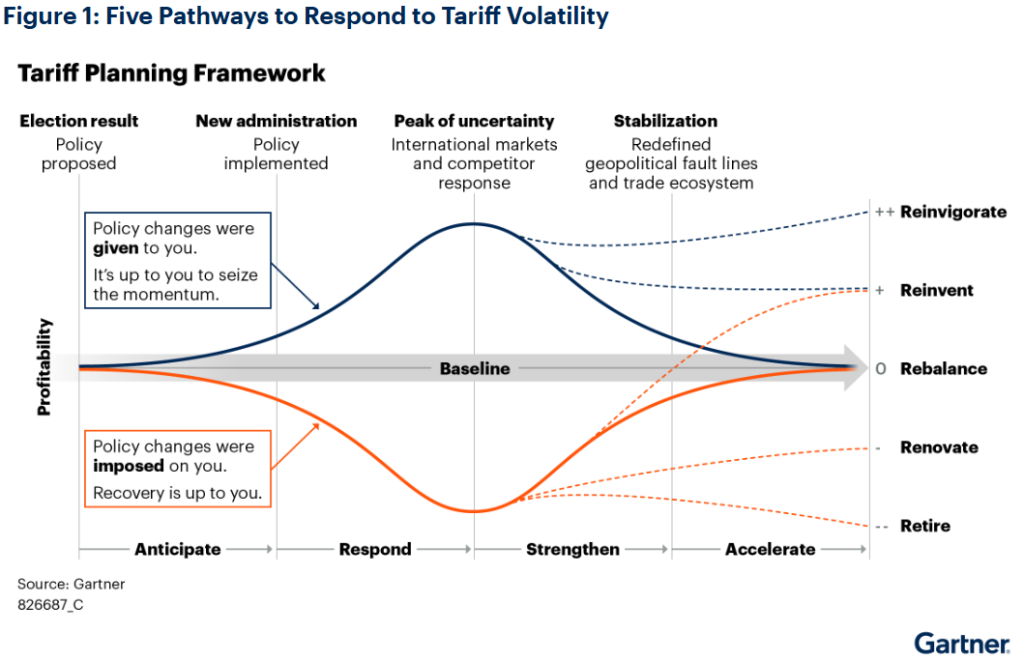President Donald Trump is rolling out tariffs, which on the time of this writing continues to evolve, and there are a variety of blended emotions about it. Slightly than specializing in politics, for at this time’s weblog I wish to give attention to the alternatives and the applied sciences. It’s time to pave a path ahead. Let’s use the instruments at our disposal to realize a aggressive benefit in at this time’s provide chain.
First a primer: In a launch from the White Home originally of February, we see President Trump is implementing a 25% further tariff on imports from Canada and Mexico and a ten% further tariff on imports from China. Vitality sources from Canada could have a decrease 10% tariff.
Whereas commerce accounts for 67% of Canada’s GDP, 73% of Mexico’s GDP, and 37% of China’s GDP, it accounts for less than 24% of U.S. GDP. Nonetheless, in 2023 the U.S. commerce deficit in items was the world’s largest at greater than $1 trillion, in keeping with the White Home launch.
One of many components driving tariffs is the aim of bringing American manufacturing again to the US—one thing I wrote about in my guide Mending Manufacturing: How America Can Manufacture Its Survival greater than 20 years in the past. My goal was to induce Washington to behave swiftly and decisively and to encourage producers to rebuild their manufacturing enterprises.
Right now, the questions stay. What affect will tariffs have on enterprise—and is there a approach enterprise can really use this as a aggressive benefit?
That is exactly the dialog I had with Calum Mair, business director, North America, EPD, final week on The Peggy Smedley Present. He says tariffs from Canada and Mexico have the potential to essentially shake up the development trade, with each execs and cons and even hidden alternatives for the development trade.
Doug Carlson, CEO, NUCA (Nationwide Utility Contractors Assn.), additionally chimed in sharing his ideas in regards to the potential roadblocks for building, saying, “The Trump Administration ought to present computerized reduction from these further duties for these metal and aluminum merchandise required for infrastructure building, that are manufactured elsewhere till such a time that our home manufacturing base will get the help and regulatory reduction they should meet demand with out dramatically rising prices to the taxpayer.”
A brand new launch from Gartner additionally suggests there are hidden alternatives for provide chain organizations, with 5 attainable pathways to contemplate.
Retire: Some firms could contemplate discontinuing a product, if absorbing the associated fee or passing the associated fee on to the client is just not a viable possibility.
Renovate: Different firms could select to recreate a product and make changes to merchandise which have been wanted for some time.
Rebalance: Firms should even be prepared for potential countermeasures, coverage escalations and de-escalations, and competitor responses. We’re solely at first days right here.
Reinvent: Some firms could search for new alternatives in new markets, pivoting as wanted, and investing in markets not impacted by geopolitical issues.
Reinvigorate: Different firms could look to develop home manufacturing capability, positioning their firm for fulfillment on this new market.

Both approach, on the finish of the day, companies should be ready for what tariffs might imply for enterprise. Will firms take up new prices? Will they go it alongside to the patron? Or, maybe, there’s a third possibility. Perhaps we will acknowledge new methods to create new efficiencies in enterprise, opening up new alternatives for all. That’s simply one thing to ponder in your corporation.
Wish to tweet about this text? Use hashtags #IoT #sustainability #AI #5G #cloud #edge #futureofwork #digitaltransformation #inexperienced #ecosystem #environmental #circularworld #tariffs #supplychain
[ad_2]

